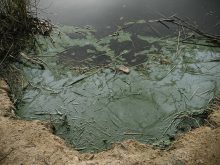Pet rabbits in southern Alberta have been diagnosed with rabbit hemorrhagic disease. A tiny virus, known as a calicivirus, causes this deadly rabbit disease.
The virus spreads easily between animals, which allows it to rampage through rabbit populations. Most rabbits that become infected die.
So far, the source of the virus in this outbreak remains unknown.
As far as diseases go, this one is particularly nasty because the virus attacks blood vessels, leading to severe hemorrhage and tissue damage in a variety of organs.
Read Also

Beef check-off collection system aligns across the country
A single and aligned check-off collection system based on where producers live makes the system equal said Chad Ross, Saskatchewan Cattle Association chair.
In addition to direct blood vessel damage, the virus attacks the liver, killing off large portions of the tissue, causing liver failure and jaundice.
Rabbits become sick within a few days of exposure to the virus and may suddenly die. Clinical signs include mental dullness, poor appetite, fever, and difficulty breathing. Bloody or frothy nasal discharge may also be present. In some ways, this is the ebola of the rabbit world.
The first known outbreak of rabbit hemorrhagic disease occurred in China in 1984, and killed an estimated 140 million rabbits.
From there, the virus spread to South Korea and Europe, where it remains endemic.
Canada has had two other outbreaks of this disease in recent years. A pet rabbit from Manitoba died of this disease in 2011. In 2018, two British Columbia instances occurred — an outbreak of rabbit hemorrhagic disease on Vancouver Island near Nanaimo, and in the Lower Mainland. This outbreak affected feral domestic rabbits that people had released into these areas. In addition to these feral populations, pet rabbits are also susceptible to infection.
The most recent outbreak in Alberta is caused by a newer strain of the virus that also affects native wild rabbits and closely related hare species, such as jackrabbits.
Elsewhere in North America, an outbreak linked to this new virus strain emerged in 2020 in northern Mexico and American states that include New Mexico, Arizona and Texas.
It seems to be spreading northward, with recent reports in Wyoming, Montana and Oregon. This outbreak has killed a number of wild species including cottontail rabbits and jackrabbits. It isn’t clear whether the cases in southern Alberta are directly linked to this larger outbreak in North America. Molecular testing of the strains involved will be useful to answer this question.
It is also unknown if this disease will affect our native jackrabbits and snowshoe hare populations.
The virus that causes rabbit hemorrhagic disease is spread through direct contact with infected material such as bodily secretions, feces, blood or tissues. Hardy environmental survival allows the virus to persist on equipment, clothing, bedding, and waterers. Finally, blood feeding insects can also spread the virus between animals.
The virus that causes rabbit hemorrhagic disease is not known to spread to other animals such as dogs, cats or any other species unrelated to the rabbit group. It also does not affect people.
Unfortunately, most affected rabbits will die as there is no specific treatment. Owners can limit the risk to rabbitries and pet rabbits through practising good biosecurity. Recommendations include eliminating visitors who have recent contact with rabbits, quarantining new and sick rabbits, using good hygiene and disinfection practices, such as cleaning equipment between groups.
Indoor housing or double-fenced outdoor areas prevent contact with feral and wild rabbits and hares. An emergency vaccine can be imported, as was done in the B.C. outbreak.
Yet another outbreak of this disease in Canada is concerning.
It is categorized as an immediately notifiable disease to the Canadian Food Inspection Agency, meaning all suspected or confirmed cases must be reported.
Veterinarians in Alberta have been alerted to this outbreak. If rabbit owners suspect the disease, the best route of action is to contact their veterinarian.
Suspected cases in wild rabbits or hares should be reported to local fish and wildlife authorities.
It is likely we will see this disease spread up from our southern neighbours in the future, but its effects on our native rabbits and hares remains uncertain.
Dr. Jamie Rothenburger, DVM, MVetSc,PhD, DACVP, is a veterinarian who practices pathology and is an assistant professor at the University of Calgary’s Faculty of Veterinary Medicine. Twitter: @JRothenburger

















